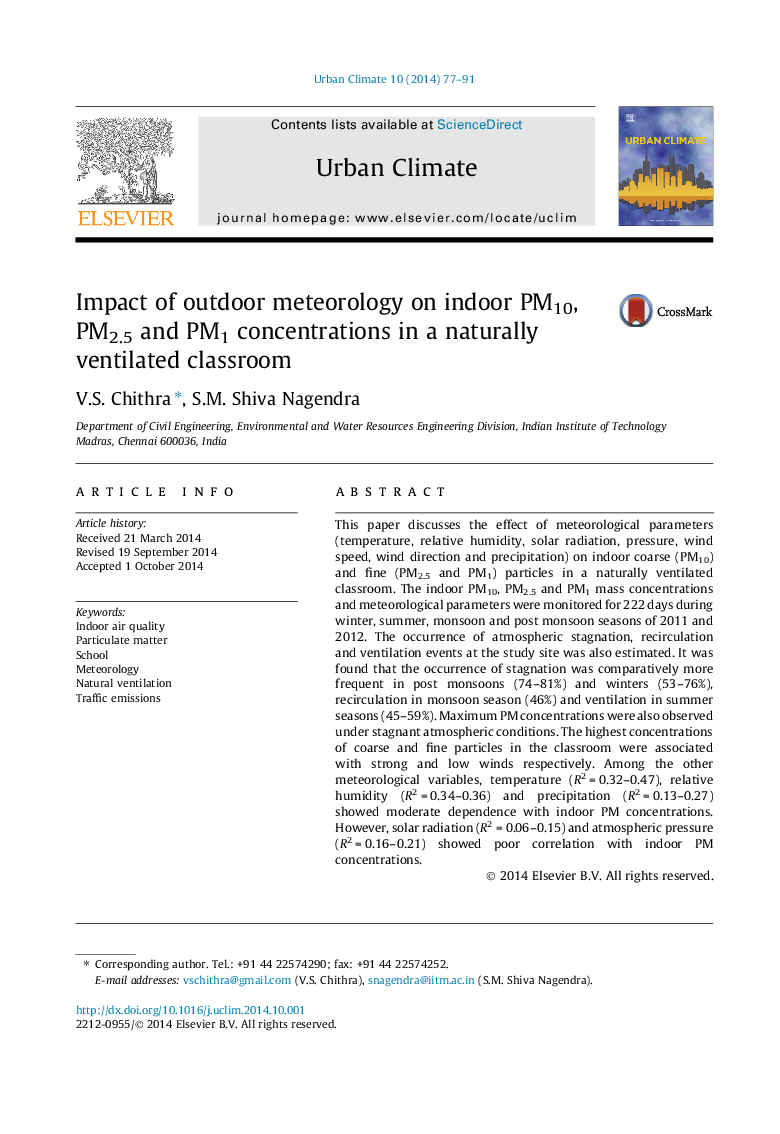| کد مقاله | کد نشریه | سال انتشار | مقاله انگلیسی | نسخه تمام متن |
|---|---|---|---|---|
| 143776 | 163475 | 2014 | 15 صفحه PDF | دانلود رایگان |
• Characteristics of indoor and outdoor PM10, PM2.5 and PM1 concentration.
• Indoor particulate size distribution strongly depends on wind speed and direction.
• Temperature, RH and precipitation showed moderate correlation with indoor PM.
• PM concentrations during atmospheric stagnation, recirculation and ventilation events.
This paper discusses the effect of meteorological parameters (temperature, relative humidity, solar radiation, pressure, wind speed, wind direction and precipitation) on indoor coarse (PM10) and fine (PM2.5 and PM1) particles in a naturally ventilated classroom. The indoor PM10, PM2.5 and PM1 mass concentrations and meteorological parameters were monitored for 222 days during winter, summer, monsoon and post monsoon seasons of 2011 and 2012. The occurrence of atmospheric stagnation, recirculation and ventilation events at the study site was also estimated. It was found that the occurrence of stagnation was comparatively more frequent in post monsoons (74–81%) and winters (53–76%), recirculation in monsoon season (46%) and ventilation in summer seasons (45–59%). Maximum PM concentrations were also observed under stagnant atmospheric conditions. The highest concentrations of coarse and fine particles in the classroom were associated with strong and low winds respectively. Among the other meteorological variables, temperature (R2 = 0.32–0.47), relative humidity (R2 = 0.34–0.36) and precipitation (R2 = 0.13–0.27) showed moderate dependence with indoor PM concentrations. However, solar radiation (R2 = 0.06–0.15) and atmospheric pressure (R2 = 0.16–0.21) showed poor correlation with indoor PM concentrations.
Journal: Urban Climate - Volume 10, Part 1, December 2014, Pages 77–91
